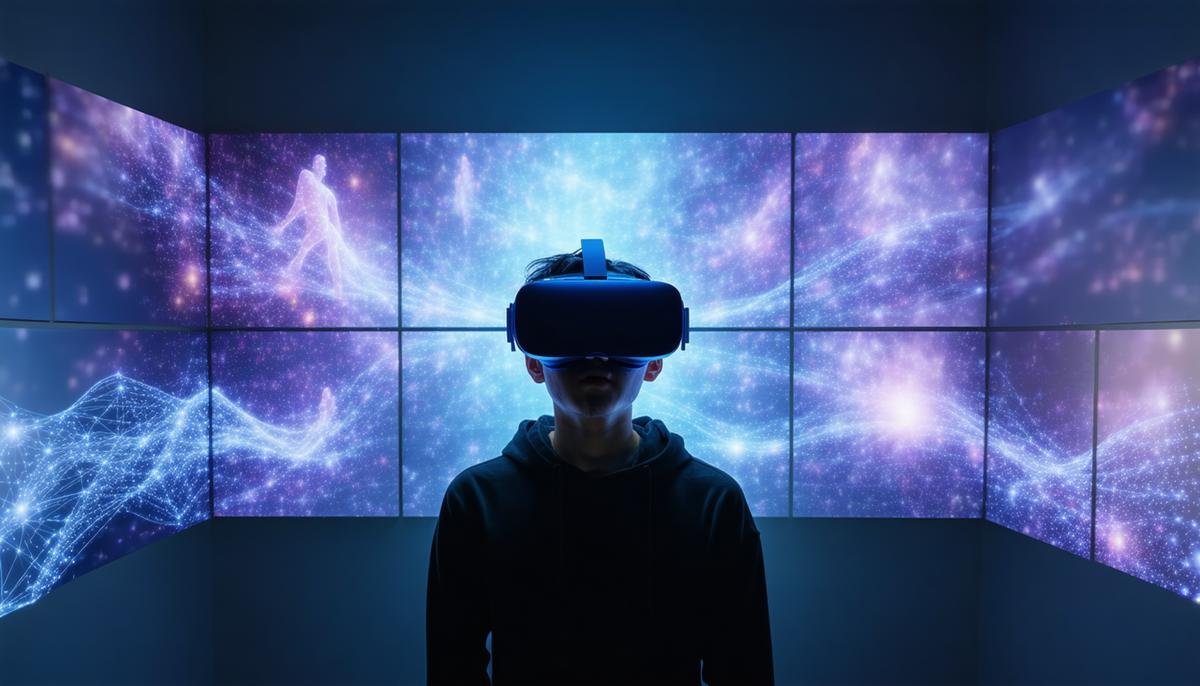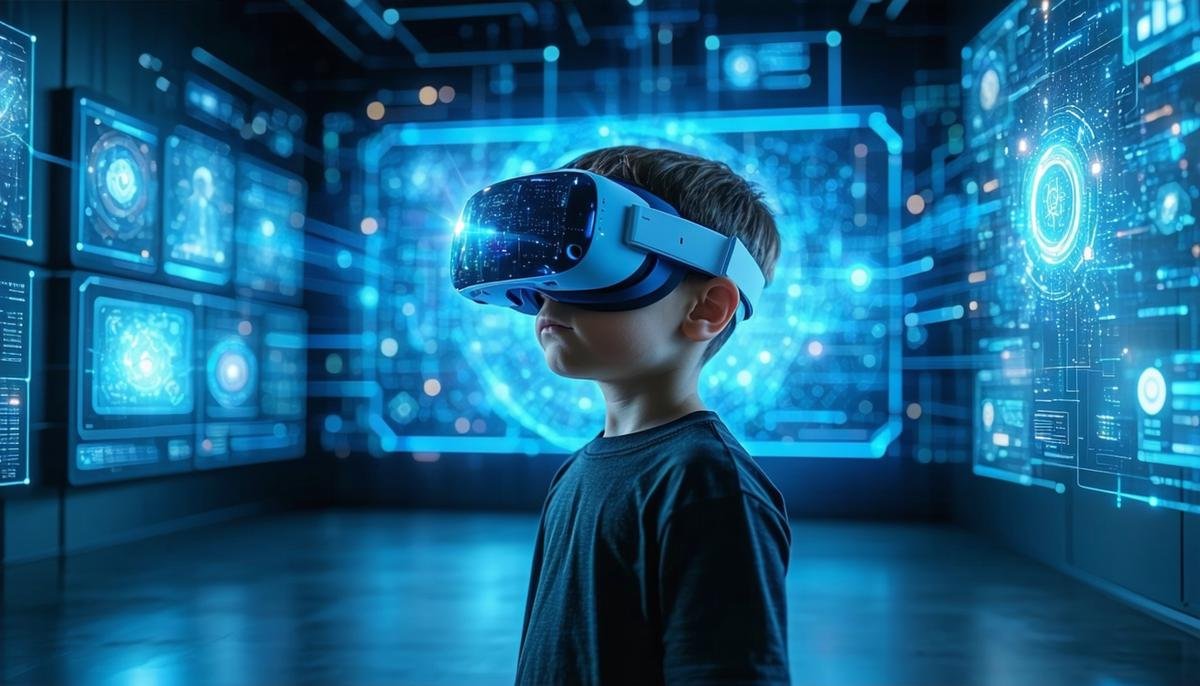The Role of AI in Enhancing VR Experiences
Artificial intelligence transforms virtual reality by analyzing user data to customize each experience. Through AI, VR can change on the fly, reacting to what users do and making everything feel more real. AI algorithms allow VR worlds to respond to personal preferences, adjusting content without delay. This dynamic adaptation strengthens the connection between humans and machines.
Intelligent avatars powered by AI are another key component. These avatars participate in the experience, understanding and responding to users' movements, voice commands, and emotions. This makes interactions more engaging, turning applications into lifelike adventures.
AI also enhances learning in VR settings. The instant feedback loop modifies learning material based on how quickly someone grasps concepts. This adaptability keeps users focused on learning goals, allowing students to explore topics at their own pace.
In fields like healthcare or aviation, AI refines VR simulations to mirror real-world settings. Professionals can practice safely and efficiently within VR, facing challenges similar to what they'd encounter on the job.
Music takes on a new dimension with AI and VR collaboration. AI ensures the audio complements the VR environment, offering a soundscape that matches the visuals. This fusion of technology fine-tunes every segment of a VR journey for impact.
As VR technology advances, creators use AI to render images and scenes that feel personalized. Each immersive session feels fresh, driven by data that adjusts everything from clothing styles to landscape sounds.

Techniques for Creating Immersive VR Environments
Advanced software tools such as Unreal Engine and Unity are key to creating realistic and captivating virtual worlds. These platforms allow developers to build three-dimensional expanses with precise lighting and texturing. A well-shaded tree or a sunlit path can significantly enhance the user's experience in VR.
Lighting plays a crucial role in creating depth and evoking emotions. Shadows and highlights bring realism to the scene, helping users suspend disbelief. Whether it's a dimly lit corridor or a brightly lit open field, proper lighting design sets the mood and enhances perception of space.
Texturing works in tandem with lighting to provide the tactile foundation of the digital world. Detailed textures can turn flat surfaces into something that feels real, complete with appropriate visual characteristics.
Haptic feedback technology adds a tangible element to the immersive experience. It provides physical sensation to virtual interactions, making digital experiences feel more real. This technology enhances the overall sensory interaction in VR.
Combining these elements—software, lighting, textures, and haptic feedback—results in environments that feel dynamic and responsive. As technology advances, creators continue to push boundaries in crafting immersive digital environments.

AI-Driven Personalization and Adaptive Storytelling
AI customizes stories and gameplay in VR to each user, creating unique and personal experiences. It analyzes gameplay data to understand player preferences, allowing VR environments to adapt seamlessly. This ensures the experience remains fresh and unpredictable.
The technology enables dynamic storylines where choices lead to different outcomes. Characters adapt their dialogue and reactions based on past interactions, enhancing immersion. This multidimensional experience draws players deeper into worlds they help shape through their actions.
AI-driven storytelling also has potential for educational applications. Learners can approach problems from multiple angles, guided by AI-driven feedback. This turns repetition into an evolving experience that both captivates and educates.
Beyond storytelling, AI can adjust game mechanics like difficulty levels in real-time. This keeps players engaged by maintaining an appropriate level of challenge. As VR technology matures, the combination of AI and adaptive storytelling continues to redefine gaming experiences.

AI and VR in Professional Training and Simulation
AI-driven VR simulations offer industries like healthcare and aviation a platform for risk-free, immersive learning. These simulations allow professionals to practice complex procedures or emergency responses without real-world consequences.
- In healthcare, surgeons can refine their skills through repeated practice, receiving immediate AI feedback on their technique.
- For aviation, pilots and crew members can experience rare scenarios that demand quick thinking and precise execution.
AI's ability to craft authentic experiences dynamically is key. It can modify simulations based on trainee performance, providing a balanced challenge. This personalized approach keeps learners engaged and motivated.
These simulations also offer analytical insights for objective performance evaluation. AI logs every interaction, providing detailed feedback on strengths and areas for improvement. Over time, this data informs and improves training programs.
As technology advances, AI-driven modules may expand to teach soft skills like empathy in patient care or leadership in crisis scenarios. This holistic approach prepares professionals to tackle real-world challenges with knowledge, intuition, and empathy.

Future Trends in AI and VR Integration
The future of AI and VR integration promises more interactive and personalized experiences. AI-driven character design may lead to avatars that learn and evolve with each interaction, adjusting their personalities and skills based on user engagement.
In education, AI could create adaptive learning environments that mold to each student's abilities and preferences. This personalized approach combines traditional teaching methods with AI's dynamic feedback capabilities.
AI is expected to enhance realism in VR settings, improving interactivity to make virtual scenarios feel more authentic. This could include more realistic environmental reactions and improved sensory feedback.
In gaming, AI may enable richer storytelling with evolving character arcs and unpredictable interactions. This could eliminate repetitive gameplay, ensuring each adventure feels distinct.
The combination of AI and VR also shows potential for innovative training solutions across various industries. For example, corporate training could use AI characters to simulate real-world scenarios for more effective skill development.
As these technologies continue to integrate, they may create digital ecosystems that offer new depths of interaction and educational possibilities, bridging the gap between imagination and reality in virtual environments.

As AI and VR advance, they reshape digital interactions, offering increasingly personal and responsive experiences. This integration creates adaptive spaces that grow with each user, promising a future where virtual experiences rival real-world encounters in engagement and impact.
- McKinsey & Company. The State of AI in 2023: Generative AI's Breakout Year. McKinsey & Company; 2023.
- SlashData. Developer Ecosystem Insights Report. SlashData; 2023.
- NPR. Virtual Reality Is Expanding Beyond Hardcore Gamers. NPR; 2023.
- PC Gamer. Half-Life: Alyx Review. PC Gamer; 2020.
- NME. Interview with Anna Hollinrake. NME; 2022.




